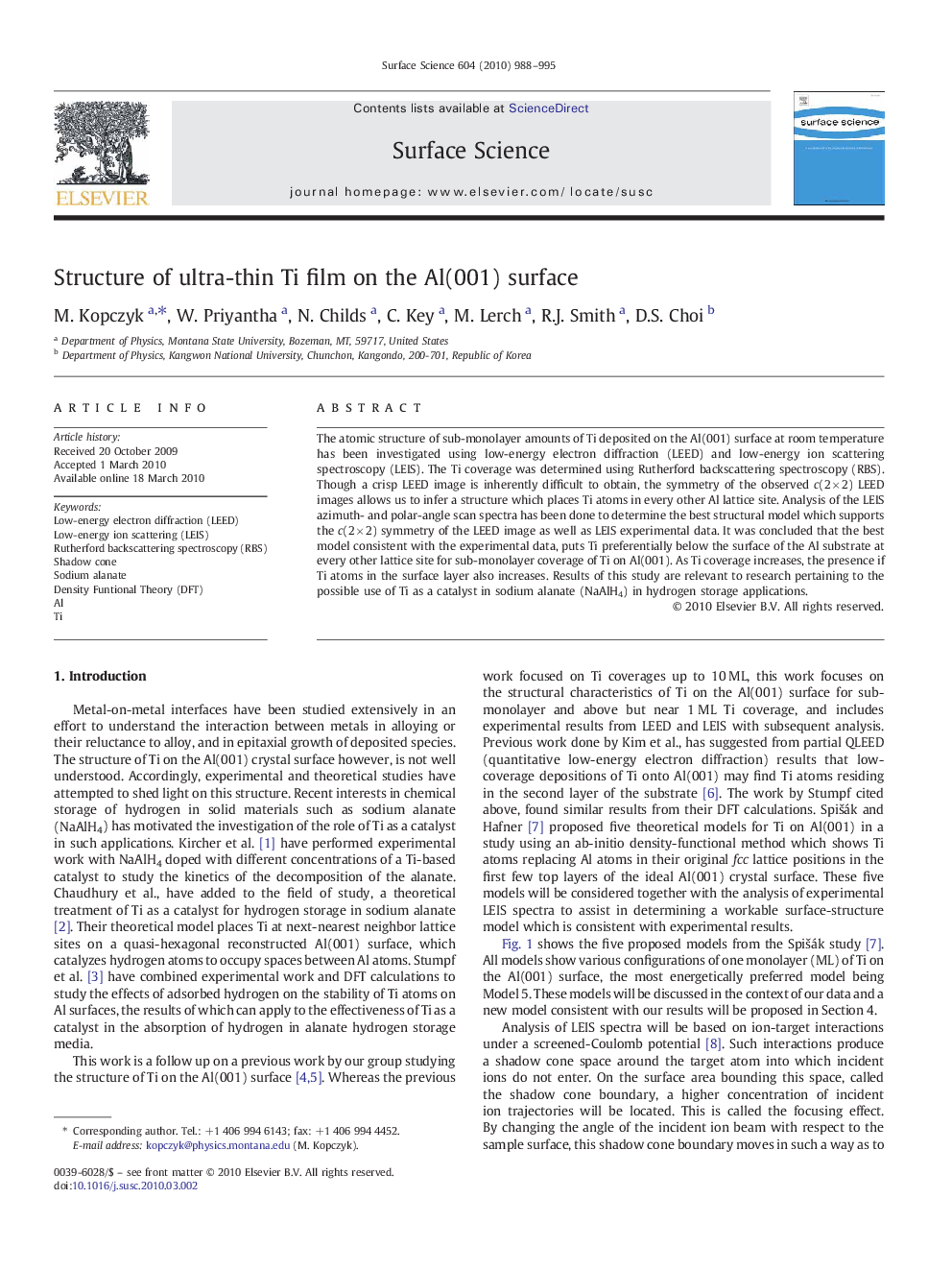| Article ID | Journal | Published Year | Pages | File Type |
|---|---|---|---|---|
| 5423251 | Surface Science | 2010 | 8 Pages |
The atomic structure of sub-monolayer amounts of Ti deposited on the Al(001) surface at room temperature has been investigated using low-energy electron diffraction (LEED) and low-energy ion scattering spectroscopy (LEIS). The Ti coverage was determined using Rutherford backscattering spectroscopy (RBS). Though a crisp LEED image is inherently difficult to obtain, the symmetry of the observed c(2Â ÃÂ 2) LEED images allows us to infer a structure which places Ti atoms in every other Al lattice site. Analysis of the LEIS azimuth- and polar-angle scan spectra has been done to determine the best structural model which supports the c(2Â ÃÂ 2) symmetry of the LEED image as well as LEIS experimental data. It was concluded that the best model consistent with the experimental data, puts Ti preferentially below the surface of the Al substrate at every other lattice site for sub-monolayer coverage of Ti on Al(001). As Ti coverage increases, the presence if Ti atoms in the surface layer also increases. Results of this study are relevant to research pertaining to the possible use of Ti as a catalyst in sodium alanate (NaAlH4) in hydrogen storage applications.
